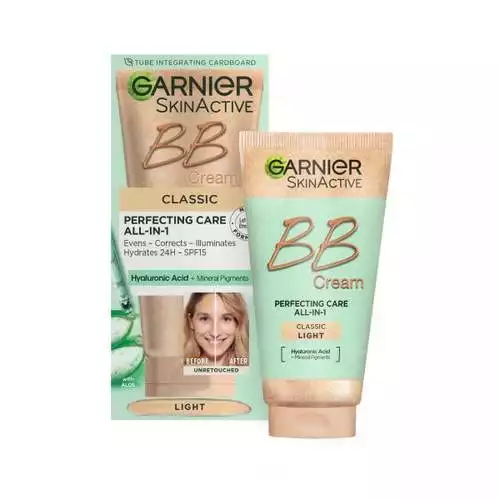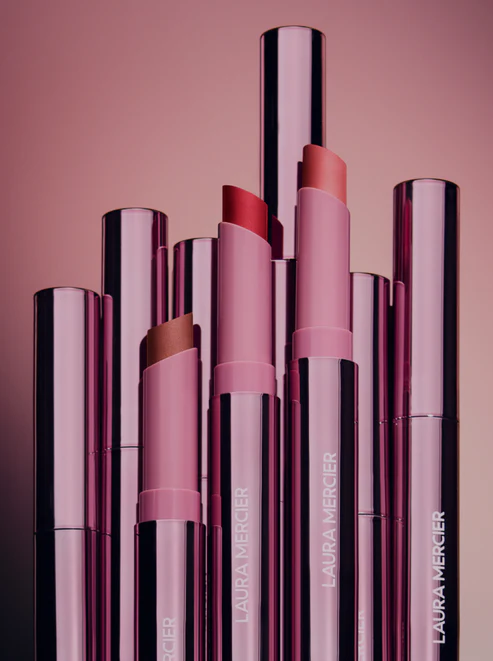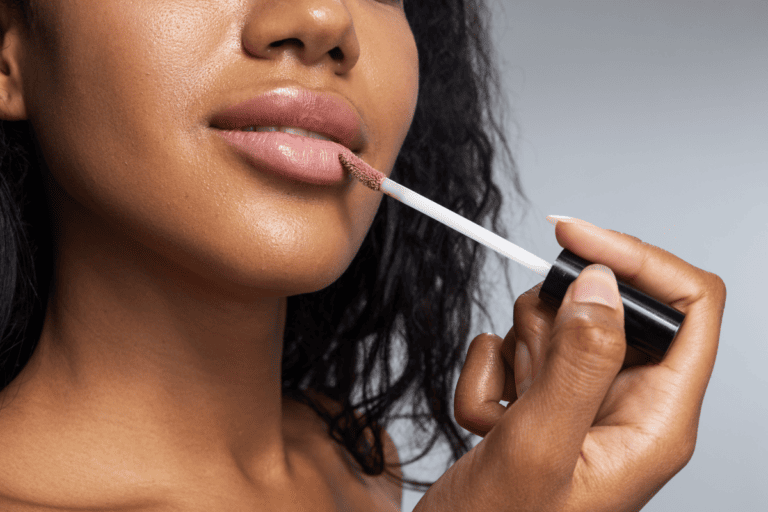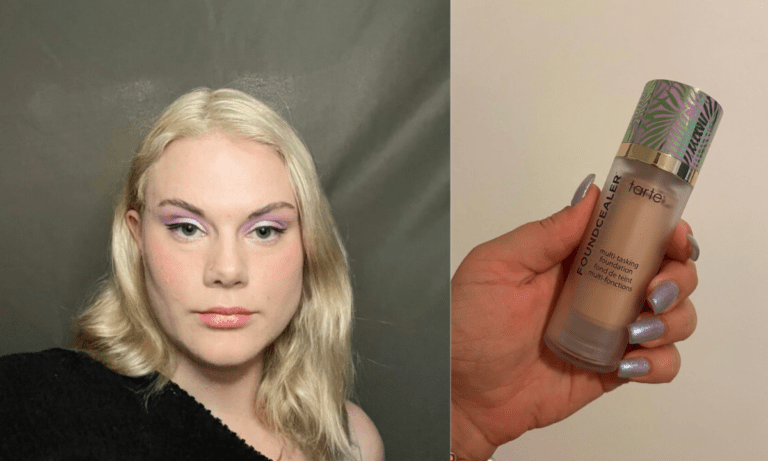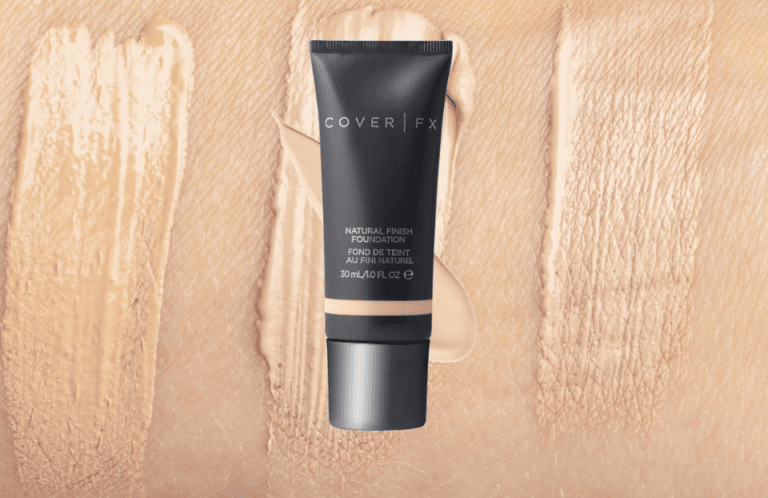Why Does My Makeup Look Dry And What Can I Do About It?
- How to Find the Best Concealer for Eyebrows: Highlighting and Defining Your Brows - October 7, 2023
- Tarte Maneater Mascara Review: Is This Mascara Worth It? - October 7, 2023
- Why Does My Makeup Look Dry And What Can I Do About It? - October 7, 2023
You spend so much time applying your makeup but you notice your skin is flaky and even patchy. Do you ask yourself, “why does my makeup look dry?”
Well, you could be doing nothing wrong — makeup does dry out our skin. But there are things you can do to keep your skin looking smooth and flawless while wearing your favorite makeup. Here’s why your skin looks dry with makeup and the little changes to amp up your makeup game.
Bottom line up front

If your makeup looks dry, it’s likely because your skin is dry. Always moisturize your skin and use a hydrating primer to prep your skin for makeup application. The type of foundation you use also matters. If you struggle with dry skin, use a BB cream or tinted moisturizer. Keep in mind that everyone is different and your makeup could be looking dry for reasons not mentioned here.
Why Does My Makeup Look Dry?
There could be a variety of reasons your makeup looks bad, with the most common reasons being:
- Products you’re using
- Combination of products
- The way you apply your makeup
- Dehydrated skin
- Not using a primer
Let’s take a deeper look at these reasons.
Products You’re Using
Certain foundations, concealers, and powders can make your skin look dry. This is especially true if your skin looks dry. Certain formulas, such as creams, are more hydrating than powders.
Full-coverage products do tend to make your look more cracked than medium-coverage makeup. This is especially true if your makeup has a matte finish. That’s why it’s best to choose products with a dewy, glowing, or radiant finish.
Combination of Products
Even if you scratch off every item off of this list, it could be the combination of products you’re using. That’s why I say less is often more with makeup. Stick to the essentials. If you don’t need the fancy blush or contour palette then toss them. Instead, stick to a foundation, a simple powder, and primer. Make sure your makeup routine also focuses on skincare.

Makeup Application
Your entire makeup application process will affect the outcome of your makeup. For example, if you’re not using a good primer, then your skin won’t look as smooth as you want. Many people with dry skin also benefit from applying their makeup with a damp sponge. The damp sponge prevents the makeup from looking patchy. Using too much powder can also make your skin look cakey. Finally, your skin will look fresh when you use a setting spray.
Dehydrated Skin
A good reason why your skin looks patchy is you’re not properly moisturizing before makeup application. If you find it difficult to follow a skincare routine, I suggest trying a BB cream or tinted moisturizer. This way, you’re delivering a healthy dose of moisture to dry skin while covering up imperfections.
Not Using a Primer
Skipping the primer could be what’s causing your dry skin. Plus, primers give your skin a smooth canvas so the foundation lasts longer. The right primer can prevent creasing and makeup from settling into wrinkles. For best results, use a hydrating primer for a more beautiful complexion. If you’re concerned about heavy primer, you can find lightweight primers that still make your skin glow.
Read More: Makeup Primer Guide: How To Find The Best Ingredients For Your Face
Will Lots of Makeup Make My Skin Look Dry?
Do you tend to build a lot of foundation? Or maybe you use a full-coverage foundation? Either way, maybe you think the amount of makeup you’re using is making your skin look dry. Heavy foundations can make your skin look crusty, but it really depends on the formula and the way you apply your foundation.
A lot of other beauty reviewers suggest you wear a lightweight foundation for a fresh complexion. But this isn’t true — for example, the Garnier BB Cream has a very thick formula but still makes your skin look smooth. And Tarte’s Amazonian Clay Foundation also has a thick formula but doesn’t dry out your skin.
However, you should still pay attention to different foundation formulas and your skin type. For example, if you have dry or mature skin, you should avoid matte foundations. Opt for water-based foundations since they provide enough moisture for your skin.
As stated previously, using the right primer matters — regardless of skin and foundation type. Without a primer, your makeup may look dry even if you don’t have dry skin.
Whip up your best skin with our new & improved, best-selling Amazonian clay foundation!
This revolutionary hybrid cream is the first to-mass product of its kind. It combines intense hydration with tinted minerals and Vitamin C for results you can see and feel instantly.
How to Prevent Makeup From Looking Dry
While I offered some pointers, I didn’t give you the complete run-down on preventing skin from looking dry. Here’s how to prevent flakiness and patchiness when applying makeup, starting with your skincare routine.
Cleanse Your Face First
To ensure your skin doesn’t flake, you’ll want to work with a clean canvas. That’s why using a gentle face cleanser before makeup application is essential. A gentle cleanser is essential because it won’t strip any necessary oils from your skin while also cleaning any dirt from your pores. For best results, find a hydrating cleanser with ingredients such as hyaluronic acid and ceramides.
Use a Good Moisturizer
Right after cleaning your skin, always follow up with a moisturizer. Moisturizers hydrate your skin so your complexion doesn’t dry up throughout the day. If you’re concerned about your face feeling greasy throughout the day, you can find a moisturizer with a lightweight formula.
I’m using the Purlisse Priming Green Tea Moisturizer. It feels very lightweight and sinks into the skin immediately, perfect before makeup application. If you want a more affordable option, I also love the Olay Active Hydrating Moisturizing Lotion. It’s moisturizing enough to replenish skin but the lotion formula feels very fluid on the skin and blends in quickly.
This oil-free water cream contains Green Tea, White Tea, Vitamin E and French Marine Plants that penetrate into your skin for radiant results.
However, I do suggest wearing a rich moisturizer and serum on days when you’re not wearing makeup.
What if your makeup only looks dry under the eyes? I suggest using a moisturizing eye cream. Clinique All About Eyes is a lightweight eye cream that makes your eyes look refreshed and rested. The Inkey List’s Brighten-i Eye Cream is more affordable and contains moisturizing ingredients such as niacinamide.
A nurturing yet fast-absorbing daily moisturizer with a dual peptide formula, aiming to reduce the appearance of fine line & wrinkles and balance skin's natural oil levels.

Exfoliate Weekly
If you never exfoliate, this could be the reason why your skin looks cakey. Exfoliating is the process of removing skin cells from the surface of your skin. This improves the appearance of your skin. And when you do apply makeup, it will look smoother.
For a perfect glowing complexion, most people should exfoliate once a week. But you should talk to your dermatologist or esthetician about exfoliating for your skin type, using the right type of exfoliant, and the best frequency for your skin.
For example, I have sensitive and acne-prone skin, and my dermatologist doesn’t recommend I use physical exfoliants (such as facial scrubs). My esthetician friend agreed and suggested I find a gentle chemical exfoliant. Plus, over-exfoliation can irritate the skin and/or cause redness.
My esthetician recommended I use Ole Henriksen’s PHAT Glow Facial. It makes your skin look more luminous and flawless using polyhydroxy acids (PHAs). This is a chemical exfoliant that also hydrates your skin. If you do prefer physical exfoliants, I suggest Dermatologica Daily Microfoliant. As a physical exfoliant, it’s gentle while also smoothing the complexion.
An innovative pink bentonite clay mask infused with PHA to fight visible signs of aging, instantly exfoliate, purify and illuminate.
Achieve brighter, smoother skin every day with this iconic exfoliating powder. Upon contact with water this powder polishes skin to perfection to help balance uneven skin tones, while calming your skin.
Use the Right Foundation
As stated previously, the right foundation can make a difference. If typical foundations haven’t worked for you, I suggest trying a BB cream. If you don’t want the dewy look, I suggest finding a foundation that has a radiant or glowing finish. Avoid foundations with matte finishes.
Some reviewers will tell you to avoid full-coverage foundations. As long as you prep your skin and avoid matte finishes, I’ve never had a problem with full-coverage foundations. My skin is even on the dry side and I never had problems with matte foundations. That’s why I think a skincare-focused makeup regimen really makes the biggest difference.
Stick to Cream Formulas
The formula you’re using may also make your skin look dry. I personally hate powder foundations because they make my dry skin flaky, no matter how much I moisturize. I suggest using a cream formula instead of powder or even liquid formula. Cream foundations also blend really well and give your skin a beautiful glow.
Sephora Collection’s Make No Mistake Foundation and Concealer Stick blends beautifully. Even though it has medium coverage, it’s a buildable product and also doubles as a concealer. Keep in mind that Sephora is discontinuing that foundation stick. Make Up For Ever’s Ultra HD Invisible Cover Stick Foundation is a good alternative.
This super concentrated, full coverage formula packs a powerful punch in a single drop that never settles into fine lines or wrinkles. It corrects discoloration, hyperpigmentation, and imperfections while providing undetectable coverage.
The formula glides on the skin creating a natural, satin finish, undetectable to the naked eye. Ultra HD stick is a medium to full coverage foundation. Available in various shades, this comfortable, long-wearing foundation is best suited for normal to dry skin types.
Prime Your Skin First
Makeup primers do more than ensure your makeup lasts all day. Primers improve the appearance of your skin. While primers are technically an optional step, they do serve as a barrier between your skin and your foundation. They also create a canvas for makeup application, resulting in an even makeup application for a flawless finish.
The right primer can further prepare your skin for makeup application, especially if the primer includes skincare ingredients. If you struggle with dry and flaky skin, you’ll want to try a hydrating primer. Fortunately, you can find great primers that are affordable.
I have dry skin and use ELF’s Jelly Pop Dew Face Primer. It contains hydrating ingredients such as hyaluronic acid but the unique gel texture feels lightweight on the skin. And for only $10, you can’t beat the price.
A great gel primer that holds your makeup while hydrating your skin.
Maybe your skin isn’t dry but the texture is still off. If that’s the case, you’ll want to try a silicone-based primer that will smooth your skin. I use Tarte’s Timeless Smoothing Primer. This is especially a great option if you have texture issues, such as pores and acne scars. You only need a little bit of product to cover your whole face. If the Tarte primer is too expensive for you, a great affordable dupe is the ELF Poreless Putty Primer.
This skincare-infused primer delivers a filtered, soft-focus finish that smooths the appearance of pores, fine lines & wrinkles.
Poreless Putty Primer is infused with squalane to help grip makeup for long-lasting wear and a flawless finish. This hydrating formula contains a velvety texture that seamlessly glides over skin to help smooth imperfections.
Blend Your Foundation
Blending your foundation will give you that perfectly smooth appearance you’ve always wanted. But how to blend your foundation is the question.
I have to admit, I haven’t moved to the Beauty Blender yet. I’m still a devout brush user. But even with dry skin, I never struggle with flakiness. I think the secret is prepping your skin well, using specific brushes, and cleaning them on a regular basis. I prefer using dense, flat brushes such as the Sephora Collection PRO Foundation Brush. These brushes buff out the foundation for a flawless look that isn’t streaky or flaky.
However, most MUAs recommend using a Beauty Blender or similar — especially if you have dry skin. A damp Beauty Blender quickly blends your makeup. Many users also think makeup sponges give you a more natural look. It’s especially important to dampen the sponge so it doesn’t absorb your foundation. Use a stippling or bounce motion to pack on more coverage.
You should also wash your Beauty Blender. Actually, I recommend cleaning your Beauty Blender more frequently than your brushes. I will explain more about this in another section.
PRO Brush Collection, thirty brushes with the highest-quality, hand-shaped vegan synthetic bristles. The tapered artistry handles help offer ultimate control in makeup application to help you create any makeup look you desire.
Use Concealer Sparingly
You’ve seen it before. The MUAs on social media who draw large streaks of concealer on their face for more coverage. If you use this technique, discontinue it immediately. Concealer is a thicker formula; only a little is needed to cover blemishes and other imperfections.
A concealer is not meant as an alternative for a foundation. That’s because concealer is made to sit on top of the skin. When the oils from your skin mix with concealer, it can cause your skin to look patchy. The effects can be more prominent if you have dry skin.
How do you apply a tiny dab of concealer and still get the coverage you need? First, use the right concealer. NARS Radiant Creamy Concealer has been my HG ever since I was working at Sephora. It conceals well and a little bit goes a long way. If the price throws you off, this product usually lasts over a year for me. Again, you only need a little bit for coverage.

Still, there are other cheaper alternatives. Sephora Collection is cheaper than NARS and makes great concealers. I’ve used the Make No Mistake Full Coverage Concealer before and liked it. It’s half the price of the NARS concealer, yet has powerful coverage, looks natural, and lasts throughout the day.
Coveted by artists for its luxurious texture and luminous finish, new radiant creamy concealer evens skin with lightweight medium to high buildable coverage. Long wearing and crease-proof.
If you don’t need a full-coverage concealer, there’s no reason to spend an arm and a leg on one product. I like the NYX HD Photogenic Concealer Wand for under the eyes. The formula is thin but it still provides decent coverage (albeit not as much as NARS and Sephora) and looks natural. This one also doesn’t get cakey, even under the eyes.
Our best-selling HD Studio Photogenic Concealer effectively covers imperfections, discoloration and under-eye circles without ever looking cakey or obvious. The result is beautiful, natural-looking coverage you can count on.
Pick the Best Powder
For many, a setting powder is a final step in their face makeup routine. But if your skin leans to the drier side, you should be very specific about choosing a powder. The right powder won’t dry out your skin and will maintain that smooth finish.
Stay away from full-coverage powders and focus on lightweight, translucent powders. Just read reviews and make sure the powder doesn’t leave a white cast on your face.

The Make Up For Ever Ultra HD Microfinishing Loose Powder has been my HG for years. It sets your makeup for all-day perfection. Plus, it doesn’t look chalky or dry. The Laura Mercier Translucent Loose Setting Powder is another option. This one also sets your makeup and gives your skin a smooth finish that never dries out.
Makeup Forever Ultra HD Microfinishing Loose Powder is a finishing powder that gives a light matte effect and a smooth luminous finish.
Set, don’t settle with the original Translucent Loose Setting Powder, now with 24HR Shine Control! Cult favorite and winner of major awards, Laura Mercier’s “Best in beauty” Translucent Loose Setting Powder is beloved for its 16HR wear and iconic soft-focus finish with zero flashback.
Get 30% OFF on Sale Items! Exclusively at the Laura Mercier online store.

If you want an affordable alternative, I like the Covergirl TruBlend Pressed Powder. However, don’t use the powder puff included. It will make your skin look flaky. Instead, opt for a fluffy face brush such as the Sephora Collection PRO Powder Brush #50. Sephora brushes are always soft and apply makeup really well.
A cheaper dupe is the SIGMA F10 Powder/Blush Brush. My aunt actually got me a pack of SIGMA brushes for Christmas one year and I still use them to this day. They last a long time, but I still recommend you clean these brushes regularly as they do get gross easily.
The F10 - Powder/Blush Brush by Sigma is equipped with very soft and slightly beveled bristles that apply blush and powder products evenly onto the skin without absorbing any product. Recommended Use: Use for powder application. Medium coverage.
Don’t Forget the Setting Spray
Have you tried all of these tips but your makeup still cracks at the end of the day? Wear a setting spray but try one that will hydrate your skin. This spray not only feels refreshing but will help your skin lock in moisture. Plus, the best setting sprays don’t leave a greasy residue. I also suggest buying a travel-sized setting spray and keeping it in your bag. Give your face a spritz whenever you need it.
The Urban Decay All-Nighter Ultra Glow Setting Spray is a classic. This spray is very lightweight and will lock in your makeup look. Plus, the glowing effect is great for dry skin types!
This vegan formula*, longwear setting spray sets makeup all day and leaves skin with a dewy glow. Infused with hydrating ingredients like hyaluronic acid and agave extract, All Nighter leaves skin feeling moisturised and refreshed.
Wash Your Makeup Brushes
I literally cannot stress this enough! PLEASE wash your makeup brushes and sponges on a regular basis. Cleaning your makeup brushes is not only sanitary but will give you a fresh-faced look every time.
How often should you clean your makeup brushes? This depends on how often you wear makeup. If you wear makeup constantly (every day or every other day) then wash your brushes weekly. If you only wear makeup sparingly, such as once a week, clean your brushes once every couple of weeks.
How do you wash your makeup brushes? I’ve heard of every tutorial and product under the sun. While you can find makeup brush cleaners, you can clean your brushes DIY. Here are the cleansers I use:
- Baby bath/baby shampoo
- Coconut oil
- Pond’s Cold Cream Cleanser
I love cleaning brushes with a baby bath or shampoo product. This product cleans your brushes thoroughly yet is gentle enough to not destroy the integrity of the brushes. I dampen the brush with lukewarm water, dispense a little drop of baby bath on the brushes, squeeze the bristles gently and massage the soap into the brushes, then lay the brushes out to dry overnight.
A colleague of mine at Sephora encouraged me to try cleaning my brushes with coconut oil. Coconut oil not only cleans the brushes but removes most pigment from the bristles. The oil also conditions the bristles so they last longer. To clean brushes with coconut oil, I take a small amount of oil in the palm of my hand and whisk the brush in the oil. I use my fingers to massage the oil into the bristles. Then, I rinse the brush. I always follow through with the baby bath to get rid of any oily residue.
You can also wash your brushes with Pond’s Cold Cream Cleanser. Like coconut oil, Ponds breaks down the makeup pigment and leaves your brushes squeaky clean. After dampening the brushes, I massage a little bit of cleanser in the brush. Then, I rinse the brush out with water.
I honestly do find the baby bath and coconut oil method to be more effective than Ponds, but if you already have a jar of Ponds lying around then you can use that for a quick brush cleaning.
Dissolves all traces of makeup and moisturizes for soft radiant skin Here at Pond’s, we believe that skin care doesn’t need to be complicated or time-consuming with several different products.
FAQs
Question: My makeup doesn’t look dry but it still looks bad. What’s happening?
Answer: Here are some other skin texture problems when wearing makeup:
• Setting into wrinkles
• Accentuating pores
• Looks greasy and shiny
Here’s how to solve these problems.
Prevent makeup from settling into wrinkles
You’ll want to do many of the skincare steps I discussed previously. Use a hydrating moisturizer, ideally one with anti-aging ingredients such as retinol. Exfoliate once a week or as recommended by a dermatologist or esthetician. Use a smoothing primer to disguise skin texture. Avoid a full-coverage foundation and opt for medium/buildable coverage products. You can also choose a BB cream formulated with ingredients suitable for mature skin.
Prevent makeup from accentuating pores
I suggest using a gentle cleanser but one made for acne-prone skin. Pores get bigger when they’re filled with dead skin, oil, and dirt. Always follow up with a lightweight moisturizer. Your moisturizer or primer should also include sunscreen. Sun exposure can enlarge pores, so be sure to protect your skin daily. You should also exfoliate once or week or as recommended by your dermatologist or esthetician.
Prevent makeup from looking shiny
You have the opposite problem as what I’ve been discussing. You more than likely have oily skin. If this is the case, use a lightweight moisturizer and mattifying primer before makeup application. Use a powder foundation formula instead of liquid. Spritz some mattifying setting spray on your face. Carry blotting papers when you’re out. Make sure you use a deep-cleaning mask at least once a week.
Question: I tried all of this and my foundation still looks bad on me. What do I do?
Answer: First, I suggest looking at your primer. Make sure your primer is right for your skin type. If it is, I still suggest trying a different brand. If the primer isn’t the culprit, try a new formula. For example, if you usually use a liquid foundation, try a powder foundation.
Question: I’m always told to use primer but I think my makeup looks better without primer. Why?
Answer: First, it’s important to understand why primer is important, even if you think your makeup looks better without it. Foundation primer acts as a barrier between your skin and the makeup. If you don’t use primer, the oils in your skin will break down the makeup. Therefore, your makeup will fade quickly or will look streaky.
If primer makes your foundation look worse, it could be an issue with your application or the type of primer you’re using. Consider how much primer you’re using. Like most makeup products, you only need a small dab of primer. If you use too much, your makeup could start cracking throughout the day and cause texture problems.
There’s also a chance your foundation doesn’t work well with your primer. For example, if you use a liquid foundation, make sure your primer is also lightweight. You could also not be using the right primer for your skin type. For example, if you have oily skin, use a mattifying primer instead of a hydrating primer.
Bottom Line
Your makeup shouldn’t look dry, patchy, or flaky. There could be a variety of reasons why your makeup looks dry. You’re likely using the wrong products for your skin type. If you have dry skin, stick to BB creams and tinted moisturizers. You should also properly cleanse, moisturize, and prime your skin before makeup application. I hope I was able to help you with your beauty process and prevent your makeup from looking dry!



